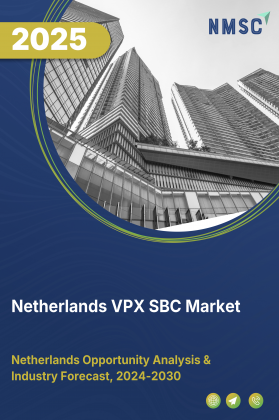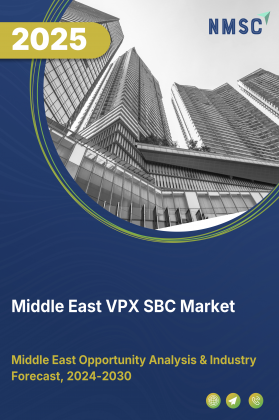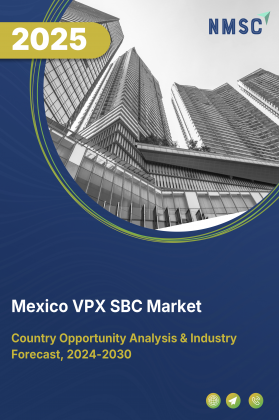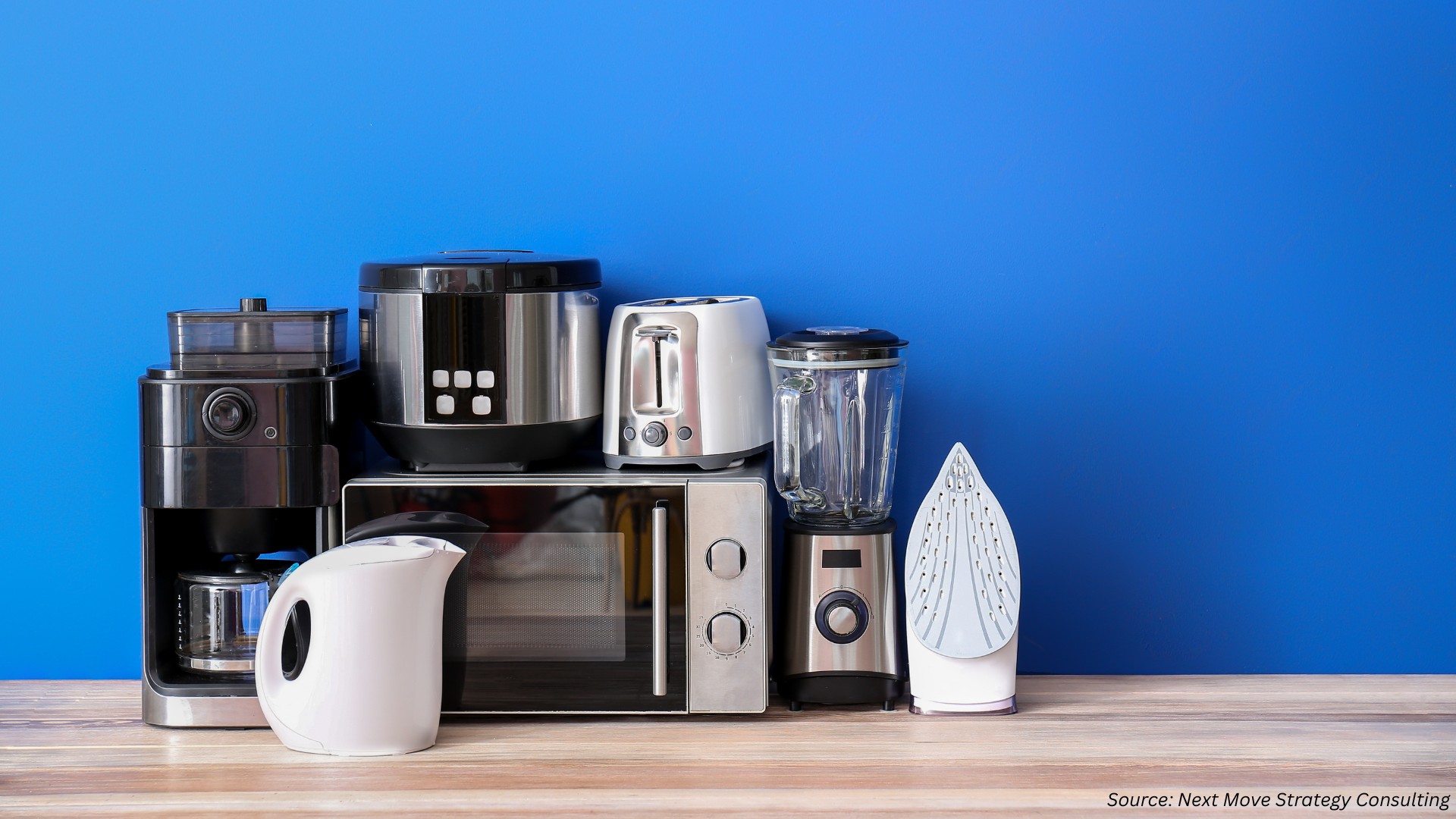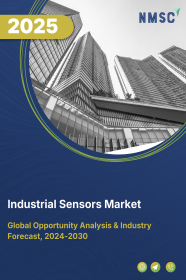
Industrial Sensors Market by Type (Contact and Non-Contact), by Sensor Type (Temperature Sensors, Pressure Sensors, Level Sensors, and Others), by Technology (Micro-Electro-Mechanical Systems (MEMS), Complementary Metal Oxide Semiconductor (CMOS), and Others), by Application (Process Monitoring, Quality Control, and Others), and by End-User (Manufacturing, Automotive, Healthcare, Aerospace, Oil & Gas, and Others)– Global Opportunity Analysis and Industry Forecast 2025-2030
Industry Overview
The global Industrial Sensors Market size was valued at USD 29.02 billion in 2024, and it is predicted to reach USD 31.53 billion in 2025. The industry is projected to reach USD 47.80 billion by 2030 with a CAGR of 8.7% from 2025-2030.
The market is experiencing significant growth due to advancements in automotive, predictive maintenance, and green energy initiatives. As industries adopt more automation and real-time monitoring, sensors are critical in ensuring efficiency, safety, and performance, particularly in sectors like automotive and manufacturing.
Technological innovations, such as AI-driven sensors, are enhancing operational capabilities, while the increasing focus on sustainability and environmental monitoring creates new opportunities. However, concerns over data security remain a key challenge, slowing the adoption of IoT-enabled sensors in some industries. Overall, the market is poised for expansion as demand for advanced sensing technologies continues to rise.
The Expansion of the Automotive Industry Fuels the Growth of the Market
The expansion of the automotive industry continues to elevate the demand for advanced sensing technologies. As vehicles become more connected and automated, manufacturers increasingly rely on industrial sensors to ensure performance, safety, and efficiency across critical functions.
Global car sales reached 74.6 million units in 2024, according to the European Automobile Manufacturers’ Association (ACEA), reflecting a 2.5% rise from the previous year. This growth boosts demand for sensors used in engine control, tire pressure monitoring, and advanced driver-assistance systems (ADAS). The shift toward electric vehicles further strengthens the need for sensors in battery management and thermal regulation. Together, these trends are contributing to the steady expansion of the industrial sensors industry.
Growing Adoption of Predictive Maintenance Enhances Industrial Sensor Deployment
The rising focus on predictive maintenance is contributing significantly to the growth of the industrial sensors market trends. As industries prioritize minimizing unplanned downtime and optimizing asset performance, the demand for sensors that enable real-time condition monitoring continues to increase.
Predictive maintenance strategies rely heavily on data from vibration, temperature, and pressure sensors to detect early signs of equipment failure. For instance, in 2024, Siemens introduced an AI-based leak detection system that uses smart sensors to monitor pipelines, helping prevent operational disruptions. This integration of sensor technologies into maintenance processes is accelerating sensor deployment across manufacturing and infrastructure sectors, thereby supporting the expansion of the market.
Continuous Technological Advancements Accelerates Industrial Sensor Market Expansion
Ongoing innovation in sensor technology is playing a crucial role in driving the expansion of the industrial sensors sector. Industries increasingly rely on advanced sensors for accurate, real-time monitoring to improve operational safety, efficiency, and process automation. These developments enable sensors to deliver more precise and reliable data across complex environments.
For instance, in 2024, Baker introduced three new series of sensor technologies aimed at enhancing safety and productivity in sectors including oil, gas, and hydrogen. These sensors improve measurement accuracy and support applications from gas concentration monitoring to detecting moisture in liquids. As industries adopt these enhanced technologies, the deployment of industrial sensors continues to expand across critical sectors worldwide.
Concerns Related to Data Security Hinder the Growth of the Market
Concerns related to data security exerts a significant restraining factor in the industrial sensor market growth. The integration of IoT enabled sensors for real time data in industries for monitoring and automation makes them vulnerable to cyber threats and data breach. These factors slow down the growth of the sector.
Expansion of Green Energy and Environmental Monitoring Applications Creates Opportunity
The growing focus on sustainability and environmental regulations presents a significant opportunity for the industrial sensors market demand. As industries strive to meet stricter environmental standards, there is increasing demand for sensors that monitor emissions, air quality, and energy usage. These sensors are becoming essential in renewable energy projects, such as wind and solar farms, and in industrial applications focused on reducing environmental impact. This shift toward green technology opens new avenues for sensor manufacturers to innovate and expand their product offerings.
Market Segmentations and Scope of the Study
The industrial sensors market report is segmented on the basis of type, sensor type, technology, application, end user and region. On the basis of type, the market is divided into contact and non- contact. Based on sensor type, the market is categorised into temperature sensors, pressure sensors, level sensors, flow sensors, position sensors, motion sensors, image sensors and others. Based on technology, the market is segmented into micro-electro-mechanical systems (MEMS), complementary metal oxide semiconductor (CMOS), nanoelectromechanical systems (NEMS), and others. Based on application the market is bifurcated into process monitoring, quality control, predictive maintenance, asset tracking and others. Based on end user the market is divided into manufacturing, automotive, healthcare, aerospace, oil and gas, and others. regional breakdown and analysis of each of the aforesaid segments includes regions comprising of North America, Europe, Asia-Pacific, and Rest of The World (Row).
Geographical Analysis
The Asia-Pacific region dominates the industrial sensors market share during the forecast period, driven by the region's rapid industrialization. The China Power report in 2024 highlights that China's manufacturing value-added reached USD 4.66 trillion in 2023, representing 29% of the global total. This surge in manufacturing is fueling the demand for sensors that optimize processes and ensure quality control.
Additionally, the automotive sector, particularly electric vehicles (EVs), autonomous driving, and connected vehicles, is driving the demand for advanced sensors. According to the International Trade Administration's April 2023 report, China remains the world's largest automotive market, with production expected to hit 35 million vehicles by 2025, further boosting sensor demand.
In North America, the market growth is propelled by advancements in automation and healthcare technologies. For example, Allegro MicroSystems launched new current sensor ICs (ACS37030MY and ACS37220MZ) in January 2024, aimed at enhancing energy efficiency in industrial automation and robotics.
Additionally, the region's strong focus on smart infrastructure boosts sensor demand, with Automation Technology introducing a new 3D sensor line in 2024 for industrial vision systems, improving quality control in manufacturing. These developments highlight North America's position as a key hub for sensor innovation, particularly in automation and smart infrastructure. Furthermore, the U.S. is seeing increasing sensor adoption due to its rapidly advancing industries, particularly in manufacturing and robotics sectors.
Europe's industrial sensors industry is driven by the region's push towards digital transformation and automation in manufacturing. Rockwell Automation expanded its sensor offerings for factory automation in Germany in 2024, integrating IoT-enabled sensors for real-time process monitoring in industries such as automotive and food processing. Furthermore, Honeywell introduced advanced flow sensors in the UK in 2024 for industrial applications, enhancing process control in chemical and pharmaceutical manufacturing.
These developments align with Europe’s commitment to Industry 4.0 and smart factory initiatives, driving increased sensor adoption across various sectors.
The Rest of the World (RoW) region, encompassing Latin America, the Middle East, and Africa, shows emerging growth in the industrial sensors market, particularly in energy and mining sectors. In 2024, Qatar’s energy sector adopted Rockwell Automation’s IoT sensors for real-time monitoring of gas processing facilities, improving operational efficiency and safety.
In Brazil, the mining industry integrated SICK's industrial sensors in 2024 for conveyor belt monitoring, enhancing reliability and reducing maintenance costs. In Africa, sensor adoption is gaining momentum, with South Africa utilizing sensors for solar panel performance monitoring in renewable energy projects. These trends underscore the growing demand for industrial sensors in resource-intensive industries across the RoW region.
Competitive Landscape and Key Developments in the Industrial Sensors Industry
The industrial sensors industry remains highly competitive, with leading companies employing various strategies to strengthen their positions. For instance, in January 2024, ABB strategically acquired Canadian firm Real Tech to expand its optical sensor portfolio, addressing the growing demand for advanced industrial sensor technology. Similarly, Bosch Sensortec made a significant move by launching the BMV080, the world’s smallest particulate matter sensor, in 2024, setting new benchmarks in air quality monitoring.
In the Asia-Pacific region, Zebra Technologies introduced AI-driven fixed industrial scanners in 2024, further enhancing logistics automation. Moreover, Rockwell Automation broadened its sensor offerings in Europe by integrating IoT-enabled sensors for real-time process monitoring in the automotive and food industries. Additionally, in the UK, Honeywell introduced advanced flow sensors for industrial applications, enhancing process control in the chemical and pharmaceutical sectors.
On the other hand, in the Middle East, Qatar adopted Rockwell Automation's IoT sensors in 2024 for real-time monitoring of gas processing facilities, while in Brazil, SICK integrated its industrial sensors into the mining industry to optimize conveyor belt monitoring. These global advancements underline the growing focus on IoT, AI, and automation technologies, all of which are playing a key role in driving efficiency, safety, and the development of industry-specific applications across regions.
Key Benefits
-
The report provides quantitative analysis and estimations of the industrial sensors market from 2025 to 2030, which assists in identifying the prevailing industry opportunities.
-
The study comprises a deep-dive analysis of the current and future industrial sensors market trends to depict prevalent investment pockets in the sector.
-
Information related to key drivers, restraints, and opportunities and their impact on the market is provided in the report.
-
Competitive analysis of the key players, along with their market share is provided in the report.
-
SWOT analysis and Porters Five Forces model is elaborated in the study.
-
Value chain analysis in the market study provides a clear picture of the roles of stakeholders.
Industrial Sensors Market Key Segments
By Type
-
Contact
-
Non- Contact
By Sensor Type
-
Temperature Sensors
-
Pressure Sensors
-
Level Sensors
-
Flow Sensors
-
Position Sensors
-
Motion Sensors
-
Image Sensors
-
Others
By Technology
-
Micro-Electro-Mechanical Systems (MEMS)
-
Complementary Metal Oxide Semiconductor (CMOS)
-
Nanoelectromechanical Systems (NEMS)
-
Others
By Application
-
Process Monitoring
-
Quality Control
-
Predictive Maintenance
-
Asset Tracking
-
Others
By End-User
-
Manufacturing
-
Automotive
-
Aerospace
-
Oil and Gas
-
Healthcare
-
Others
By Region
-
North America
-
The U.S.
-
Canada
-
Mexico
-
-
Europe
-
The U.K.
-
Germany
-
France
-
Italy
-
Spain
-
Denmark
-
Netherlands
-
Finland
-
Sweden
-
Norway
-
Russia
-
Rest of Europe
-
-
Asia-Pacific
-
China
-
Japan
-
India
-
South Korea
-
Australia
-
Indonesia
-
Singapore
-
Taiwan
-
Thailand
-
Rest of Asia-Pacific
-
-
Rest of the World (RoW)
-
Latin America
-
Middle East
-
Africa
-
Key Players
-
Rockwell Automation Inc.
-
Omron Corporation
-
Honeywell International Inc.
-
Texas Instruments Incorporated
-
STMicroelectronics Incorporated
-
Bosch Sensortec GmbH
-
Panasonic Corporation
-
Infineon Technologies AG
-
Locon Sensor Systems
-
ABB
-
TE Connectivity
-
Analog Devices, Inc.
-
Baumer
-
NXP Semiconductors
-
Amphenol Corporation
REPORT SCOPE AND SEGMENTATION:
|
Parameters |
Details |
|
Market Size in 2024 |
USD 29.02 billion |
|
Revenue Forecast in 2030 |
USD 47.80 billion |
|
Growth Rate |
CAGR of 8.7% from 2025 to 2030 |
|
Analysis Period |
2024–2030 |
|
Base Year Considered |
2024 |
|
Forecast Period |
2025–2030 |
|
Market Size Estimation |
Billion (USD) |
|
Growth Factors |
|
|
Countries Covered |
28 |
|
Companies Profiled |
15 |
|
Market Share |
Available for 10 companies |
|
Customization Scope |
Free customization (equivalent to up to 80 working hours of analysts) after purchase. Addition or alteration to country, regional, and segment scope. |
|
Pricing and Purchase Options |
Avail customized purchase options to meet your exact research needs. |

















 Speak to Our Analyst
Speak to Our Analyst



